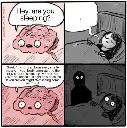
- inews.co.uk How to deal with sleep paralysis, according to experts
It's the feeling of waking but being unable to move, sometimes accompanied by hallucinations of an intruder in the bedroom. Here, a neurologist explains why it happens and how to snap out of it
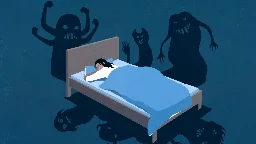
> Although in most cases sleep paralysis is entirely benign physically, it can affect sufferers mentally – sometimes so much so that it can develop into a fear of going to sleep. > >If that is the case for you, the priority is managing that fear, typically through meditation or therapy such as cognitive behavioural therapy, and instilling good sleep practices. > > “Do whatever it takes to make sure that you’re not sleep deprived. Ensure you’re going to bed at the same time, and waking up at the same time every day,” advises Professor Leschziner. He also recommends ensuring your bed is comfortable and there is no source of discomfort or distraction that may be interfering with sleep. > >If you think medication you’re on may be part of the issue, ask your GP or specialist for a review, and if you suspect you have sleep apnoea, make sure it’s diagnosed and treated. > >As for how to snap out of an episode of sleep paralysis in the moment? There are no proven techniques – but anecdotally, focussing hard on one small movement seems to be helpful. > >“Sleep paralysis is usually broken quite suddenly,” says Professor Leschziner. “People who suffer it frequently will tell me that if they concentrate very hard on just trying to move their little finger, as soon as they do manage to move that little finger, the sleep paralysis dissipates from the body entirely.”
- au.news.yahoo.com 'No one can hear you scream': Sufferer of sleep paralysis shares terrifying experiences
Millions of people have experienced sleep paralysis yet next to nothing is known about the phenomenon.
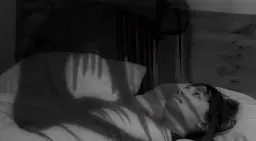
> Millions of people have experienced sleep paralysis yet next to nothing is known about the phenomenon. > > For 18 years Cathy Whitaker has become familiar with the grim figure mentioned above. > > On the face of it, the 54-year-old Melbourne woman lives a ‘normal’ life. > > She’s been married 29 years, has two grown sons and a supportive family and network of friends. > > Without digging a little deeper, you wouldn’t know Cathy struggles with depression triggered after several family members passed away and then again by a work accident. > > It was about this time sleep paralysis started creeping into her life. > > “I was first diagnosed with depression in 1997 which is when the sleep paralysis started,” she said. > > “The first episode that I can recall happened less than a week after my Nanna passed away. At the time I thought I was having a stroke and that I would be paralysed, yet aware for the rest of my life. > > “I was beyond terrified. I went straight to my GP the next morning. He told me I was just having nightmares but sent me to a neurologist who said it was “nocturnal paralysis”
-
Here's how I got rid of my sleep paralysis problem (Feel free to add your own tips)
I used to get it a few times a week. Now it's down to about 3 times in 10 years. In case this helps anyone, here is what I do:
- I never sleep on my back anymore, only on my side
- If I do roll on my back and if it does trigger it, I focus on moving my feet and toes, up and down and this will wake me up within a minute or less.
- I informed the person sleeping next to me that if I become agitated or if I start moaning, they can wake me up simply by calling my name and saying "wake up, it's only a bad dream" a few times. I will wake up, feel thankful and peacefully go back to sleep, feeling safe and secure. Knowing that, the other person does the same.
A thousand thanks to the anonymous writer who shared this information years ago.
- www.mirror.co.uk Doctor's warning over four things you should never do during sleep paralysis
Sleep paralysis can be a scary phenomenon which occurs when you are somewhere between wakefulness and sleep – but doctor Joe MD warned fans there are four things they should never do when it happens

> Doctor Joe MD also suffers from sleep paralysis and shares his medical advice online. In his most recent video, which received over 32,000 likes, he discusses his experience and outlines four things you should never do during an episode. > > He elaborated: "I had the most terrifying sleep paralysis this morning, so I wanted to tell you the four things you should never do if you're having sleep paralysis. Typically, during the REM phase of sleep, your brain is highly active. This is when you dream. > > "To stop you from acting out these dreams, your brain sends signals to inhibitory neurons to deactivate your skeletal muscles, essentially causing paralysis. When there's a disruption or an overlap between the rim [REM] and wakefulness cycle. > > "This is when sleep paralysis occurs. Things you should never do. Number one: Do not believe everything you experience during sleep paralysis. You can have very vivid hallucinations, and they're often unpleasant. We're talking demons. > > "Number two: Don't focus on the visions. Be aware that they're not real. And this will allow you to shift your focus elsewhere. Number three don't let your eyes wander. You may see things you're not ready to see. Instead, close your eyes, which will shut out any bad visions and allow you to have a calm space to talk yourself down. > > "And four, don't struggle to get out of the sleep paralysis. This will cause panic, which is never good unless you're at the disco. > > "Instead, focus on little movements like wiggling your pinky or your little toe. This may wake up your nervous system and help you come out of it."
-
Hypnagogic and Hypnopompic Hallucinations during Sleep Paralysis: Neurological and Cultural Construction of the Night-Mare
www.academia.edu Hypnagogic and Hypnopompic Hallucinations during Sleep Paralysis: Neurological and Cultural Construction of the Night-MareHypnagogic and Hypnopompic Hallucinations during Sleep Paralysis: Neurological and Cultural Construction of the Night-Mare

> Abstract > > Hypnagogic and hypnopompic experiences (HHEs) accompanying sleep paralysis (SP) are often cited as sources of accounts of supernatural nocturnal assaults and paranormal experiences. Descriptions of such experiences are remarkably consistent across time and cultures and consistent also with known mechanisms of REM states. A three-factor structural model of HHEs based on their relations both to cultural narratives and REM neurophysiology is developed and tested with several large samples. One factor, labeled Intruder, consisting of sensed presence, fear, and auditory and visual hallucinations, is conjectured to originate in a hypervigilant state initiated in the midbrain. Another factor, Incubus, comprising pressure on the chest, breathing difficulties, and pain, is attributed to effects of hyperpolarization of motoneurons on perceptions of respiration. These two factors have in common an implied alien “other” consistent with occult narratives identified in numerous contemporary and historical cultures. A third factor, labeled Unusual Bodily Experiences, consisting of floating/flying sensations, out-of-body experiences, and feelings of bliss, is related to physically impossible experiences generated by conflicts of endogenous and exogenous activation related to body position, orientation, and movement. Implications of this last factor for understanding of orientational primacy in self-consciousness are considered. Central features of the model developed here are consistent with recent work on hallucinations associated with hypnosis and schizophrenia.
Citation: Cheyne, J.A., Rueffer, S.D. & Newby-Clark, I.R. (1999) "Hypnagogic and Hypnopompic Hallucinations during Sleep Paralysis: Neurological and Cultural Construction of the Night-Mare" Consciousness and Cognition 8, 319-337.
- www.vice.com Being Ridden by the Witch: Sleep Paralysis Is the Greatest Nightmare
And it has nothing to do with dreams.
> "Being ridden by the witch" is the southern Americana folklore term for sleep paralysis. There are many more folk legends worldwide. In Fiji, it's kana tevoro, or being eaten by a demon. It's sometimes cultivated there with shouts of kania! kania! ("eat! eat!") from persons watching the victim in an effort to prolong the experience and enable communication with the dead. In Turkey, it's the djinn (another demon) strangling you in your sleep and is only remedied by reading passages from the Qur'an. In parts of China, it's a mouse stealing your breath. In Catalan folklore—of pooping Christmas log fame—it's a giant dog or cat that enters your room and sits on your chest while you sleep. (Catalan folklore is the best.) But, usually, it's some variation of witch or demon suffocating and otherwise torturing the victim. > > There's even a Swedish horror movie about the phenomenon. > > ... > > A
20121999 study in the journal Consciousness and Cognition attempts to tie centuries of "remarkably consistent" folklore surrounding sleep paralysis folklore to sleep neurophysiology. That is, there's more to the connection than just sleep paralysis phenomenon causing enough terror to lead its victims to conjure the supernatural. The unique sensation of "being ridden by the witch" traces nicely enough to real-world brain stuff. For one, sleep paralysis induces a "hypervigilant" state in the brain. This is a fairly specific condition in which a person goes into an extreme alert mode where all of their senses become super-sensitive. The result is wildly exaggerated real-world stimuli. It's a diagnostic criterion for PTSD and, as the resulting anxiety ramps up, delusions and hallucinations set in. According to the paper, this is the witch, the other person with you in the room sucking the breath out of the victim's chest. > > Actually, hypervigilance accounts for only the witch, not the breath-sucking. That sensation traces to a second factor. This factor is, in biospeak, due to hyperpolarization of motoneurons. In other words, it becomes more difficult to transmit a signal down a pathway of motor neurons (the ones that control muscle movement) because of an increase in the electrical potential between different neurons. It takes more spark to get the brain's message where it needs to go, like your diaphragm muscles. > > This is what happens normally when you're in the REM (rapid eye movement) stage of sleep. After all, breathing is usually an unconscious reflex anyway; you don't need to fire messages from your conscious brain to your diaphragm to make respiration work. It just happens. Sensors around your heart detect changes in blood pH due to increase and decreases in carbon dioxide (see above), and fire messages to your brain's respiratory center in the Medulla oblongata, which fires the appropriate messages back down to your lungs. It's all pretty neat. > > Anyhow, that's the unbearable crushing on your chest. Your body has naturally shut its motoneurons down because you're supposed to be asleep anyway and it doesn't want you acting out dreams. But in sleep paralysis it's only half-asleep, a collision of the REM sleep stages (body paralyzed, brain unconscious, dreams) and wakefulness, two stages bridged by NREM sleep (non-rapid eye movement, no dreams). NREM, partially characterized by the body not being paralyzed, itself has different stages, the first one of which involves the transition from waking thought to unconsciousness. In sleep paralysis, it's an overlap of these stages; the body is still paralyzed as in REM sleep but the brain is kicking out alpha waves, the signal that wakefulness has arrived. In consciousness, alpha waves are associated with resting or relaxing, while beta waves are associated with focus and, crucially, the body's stress responses. The first neurophysiological study of sleep paralysis, done by Takeuchi et al only 20 years ago, found that even beta waves were intruding into sleep. This isn't a thing that happens ever in normal sleep. Beta waves mean full-on awake. - www.scientificamerican.com Sleep Paralysis and the Monsters Inside Your Mind
Research suggests that cultural beliefs about the phenomenon may make it more terrifying to experience
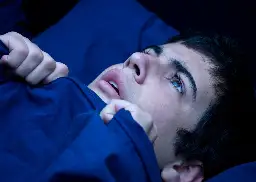
> Imagine waking up in the middle of the night to an unearthly figure with blood dripping down its fangs. You try to scream, but you can’t. You can’t move a single muscle! If this sounds familiar, you’ve probably experienced an episode of sleep paralysis, which involves the inability to move or speak upon falling asleep or awakening and is often coupled with hallucinations. About one in five people have had sleep paralysis at least once. But despite its prevalence, it has largely remained a mystery. For centuries, cultures across the world have attributed these hallucinations to black magic, mythical monsters, even paranormal activity. Scientists have since dismissed such explanations, yet these cultural beliefs persist. In fact, my and my colleagues’ research, conducted over roughly a decade in six different countries, suggests that beliefs about sleep paralysis can dramatically shape the physical and psychological experience, revealing a striking type of mind-body interaction.
-
Sleep Paralysis in Brazilian Folklore and Other Cultures: A Brief Review
www.frontiersin.org Frontiers | Sleep Paralysis in Brazilian Folklore and Other Cultures: A Brief ReviewSleep paralysis (SP) is a dissociative state that occurs mainly during awakening. SP is characterized by altered motor, perceptual, emotional and cognitive f...
> Sleep paralysis (SP) is a dissociative state that occurs mainly during awakening. SP is characterized by altered motor, perceptual, emotional and cognitive functions, such as inability to perform voluntary movements, visual hallucinations, feelings of chest pressure, delusions about a frightening presence and, in some cases, fear of impending death. Most people experience SP rarely, but typically when sleeping in supine position; however, SP is considered a disease (parasomnia) when recurrent and/or associated to emotional burden. Interestingly, throughout human history, different peoples interpreted SP under a supernatural view. For example, Canadian Eskimos attribute SP to spells of shamans, who hinder the ability to move, and provoke hallucinations of a shapeless presence. In the Japanese tradition, SP is due to a vengeful spirit who suffocates his enemies while sleeping. In Nigerian culture, a female demon attacks during dreaming and provokes paralysis. A modern manifestation of SP is the report of “alien abductions”, experienced as inability to move during awakening associated with visual hallucinations of aliens. In all, SP is a significant example of how a specific biological phenomenon can be interpreted and shaped by different cultural contexts. In order to further explore the ethnopsychology of SP, in this review we present the “Pisadeira”, a character of Brazilian folklore originated in the country’s Southeast, but also found in other regions with variant names. Pisadeira is described as a crone with long fingernails who lurks on roofs at night and tramples on the chest of those who sleep on a full stomach with the belly up. This legend is mentioned in many anthropological accounts; however, we found no comprehensive reference on the Pisadeira from the perspective of sleep science. Here, we aim to fill this gap. We first review the neuropsychological aspects of SP, and then present the folk tale of the Pisadeira. Finally, we summarize the many historical and artistic manifestations of SP in different cultures, emphasizing the similarities and differences with the Pisadeira.
-
Sleep Paralysis Explained - 2007 Interview With David J. Hufford Ph D
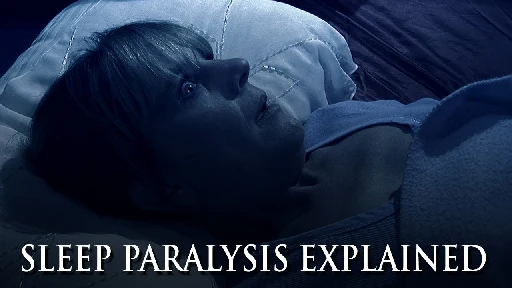
YouTube Video
Click to view this content.
I've mentioned his book so here is an interview with him.
-
Sleep paralysis reading
Fact:
- The Terror That Comes in the Night: An Experience-Centered Study of Supernatural Assault Traditions by David Hufford - looks at sleep paralysis folklore and the wide range of people's experiences, with a New Foundland focus but generally applicable too.
- Abducted: How People Come to Believe They Were Kidnapped by Aliens by Susan Clancy - examines at sleep paralysis' role in alien abduction cases (as well as other explanations)
Academic papers:
- Cheyne, J.A., Rueffer, S.D. & Newby-Clark, I.R. (1999) "Hypnagogic and Hypnopompic Hallucinations during Sleep Paralysis: Neurological and Cultural Construction of the Night-Mare". Consciousness and Cognition 8, 319-337.
- de Sá, J.F.R. & Mota-Rolim, S.A. (2016) "Sleep Paralysis in Brazilian Folklore and Other Cultures: A Brief Review". Frontiers in Psychology 7, 49-56.
